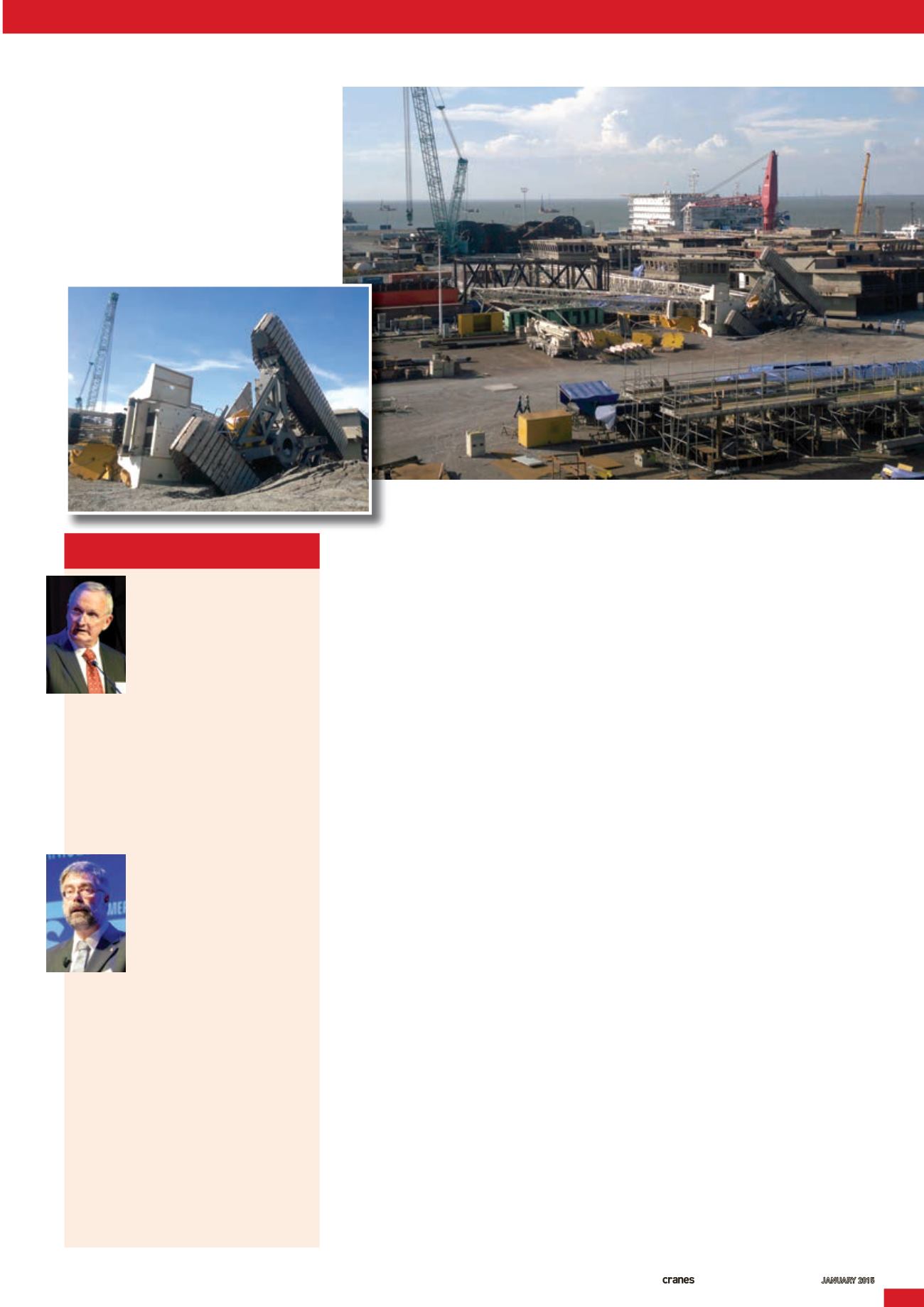
INTERNATIONAL ANDSPECIALIZED TRANSPORT
■
JANUARY 2015
25
CRANEACCIDENTS
>
F
ollowingmany crane accidents and
prior to theirdetailed investigation,
the crane, or the cranemanufacturer,
is veryoften claimed tobe the reason
behind the accident.
“Duringmy10years in theUnited
States,working in themining shovel
andmobile crane industry, I often saw,
followinganaccident, that the attorneys
for the craneownerswould claim ‘unsafe
design’, aphrase allmanufacturersprobably
hate and fear,”Søren Jansen says. “Youhave
all seen the result of these twowords: That
iswhenamanufacturerhas to recall, not
only thepieceof equipment inquestion
and fix that singleunit, no, theyhave to
recall all similarpiecesof equipment or
machinesworldwide and fix them.”
Having seenbroken lattice and
telescopicbooms, andbrokenwinches,
however, these accidents are causedby
different kindsof shortcomings from the
craneowner and, or, theoperator and,
unfortunately, are all toooften causedby
intentionalmisuse,Meissner says.
Jansenadds, “Havingbeen involved in
the investigationofway toomany crane
accidentsduringmy career in cranes, as the
The root causes ofmobile crane accidents, as
discussedbyKLAUSMEISSNER andSØREN JANSEN
Thesafeuseof
mobilecranes
In thispicture fromAsia thegroundwas only
prepared in someareas and theuser tried to
travel the cranewithmore than300 tonnes of
loadona fully rigged crawlerwithmore than90
metres ofmainboomand super lift. Theground
gaveway as a result of exceeding the limits of
groundpressure. Theeffect isknownas shear
failure. There isno technicalmeanswhich can
be installedon the craneas a countermeasure
when theground fails
ABOUTTHEAUTHORS
SØREN JANSEN
has spent
more than 30 years in the
crane industry, half of these
years selling cranes and
15 years as themanaging
director of a large crane rental
company in Scandinavia.
Since he retired from the crane rental
industry in 2009 he has, in addition to
many other activities, alsoworked, and
is still working, as an investigator for a
large insurance company. There his job is
to find the root cause for crane accidents
when the parties involved cannot come to
an agreement.
KLAUSMEISSNER
has worked
in themobile crane industry for
more than 25 years, starting as
amechanical engineer in the
trials department of Demag,
leading the design of control
systems and being the head of
research and development for telescopic
boom and lattice boom cranes in the
Zweibrücken plant.
Meissner is now taking care of product
safety and product strategy for Terex
Cranes worldwide. Meissner alsoworks
withmanufacturer association FEM as
president of themobile cranes sub-
group. In addition, he has been nominated
convenor of the Europeanworkgroup
for the safety standard EN13000 for
mobile cranes. The group has finished
an amendment of EN13000 and has also
beenworking on a new version.
CEOof a large crane rental company, or as
an insurance investigator, eachand every
oneof all these crane accidentswere caused
by shortcomings– shortcomingsofmany
different kinds, ranging frommistakes
towilful acts– shortcomings amongst
oneormoreof thepeople involved in
the crane assignment, that endedupas a
mobile crane accident. Somy conclusion,
andagainbasedonmyownpersonal
experience, is that the cranes are safe to
use. The cranes themselvesdon’t cause
accidents, the accidents aremostly caused
by thepeople surroundingandusing
the cranes.”
Therehavebeen few issues in the
industry that aredesign- ormanufacturing-
related. In some cases therehavebeen
issueswith craneswhen thedesignand/
ormanufacturingdidnot following
internationallyaccepted standardsor
whenmanufacturers steppedonnew
unknownground.
It is time to shift the focus from
technical issues tobehavioural issues
when talkingabout root causesof crane
accidents.Healthand safety executives
examininga crane inanattempt to find the


